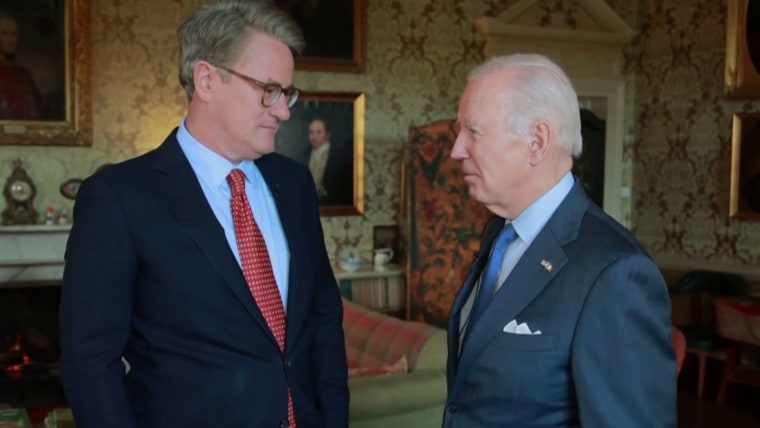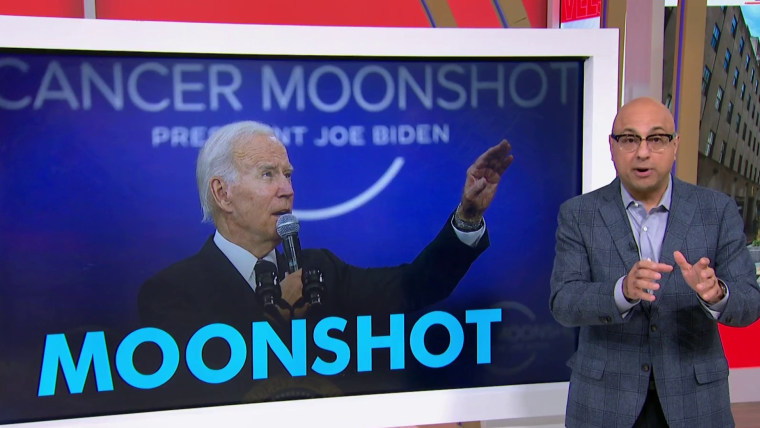At New Orleans’ Tulane University last week, President Joe Biden announced the awarding of $150 million for cancer research through Advanced Research Projects Agency for Health (ARPA-H), another accomplishment of his “Cancer Moonshot.” The award will go to eight teams around the country for projects that aim to improve the methods by which surgeons remove cancerous tumors. In his remarks, Biden stated that the fund has “set its sights on a big idea: calling on researchers and innovators to pioneer new techniques and technologies to make cancer removal more precise, accurate, successful.”
Imagine cancer surgery that removes all the tumor, the first time, without harming healthy cells.
president joe biden speaking at tulane university
“Imagine cancer surgery that removes all the tumor, the first time, without harming healthy cells,” he said.
This announcement marks a goalpost in the Cancer Moonshot work Biden led as vice president, first announced in 2016, the year after his 46-year-old son Beau Biden died of brain cancer. The original Moonshot promised to “make a decade’s worth of advances in cancer prevention, diagnosis, and treatment, in five years” and “end cancer as we know it.” President Biden re-emphasized this commitment in 2022, including the more specific goal of reducing the cancer death rate by at least 50% over the next 25 years.
The term “moonshot” used to refer to something that was highly unlikely. However, after we actually landed on the moon, it came to mean something difficult but achievable. Indeed, cancer experts have said the ambitious goals of Biden’s Cancer Moonshot can be achieved.
Cancer has been the second most common cause of death in the U.S. for nearly 90 years. It’s the leading cause of death for those under the age of 85. Last year, more than 613,000 people died of cancer, similar to the population of Memphis, Tennessee. More than half of U.S. families have been affected by cancer; 40% of us will be diagnosed with cancer at some point in our lifetimes. President Biden is among those Americans. Not only did he lose his son Beau to brain cancer, but the president and first lady Jill Biden have had cancerous skin lesions identified and successfully removed.
There aren’t that many Americans who think we’ve spent too much money trying to solve cancer; a third or more think we spend too little. However, Biden’s latest announcement regarding increased funding for cancer treatment innovations comes at a time when overall federal funding for scientific agencies is down.
That’s why an announcement of this kind is a golden retriever of health causes: it’s widely endearing, politically popular and it has traditionally been bipartisan. Even so, this Moonshot faces significant challenges.

First, cancer is a bit of a whack-a-mole; its occurrence changes as our environment and population change. The role of specific cancer risks, including factors like obesity and environmental exposures to poor air and toxic waste, shift over time and across geographic locations. Climate-related events influence people’s exposure to cancer risks and access to cancer care. Our population is aging, and, thus, is more vulnerable to cancer. At the same time, increases in cancer among middle-aged and younger people reflect the impact of evolving risk factors.
Second, though the projects Biden announced funding for last week will employ cool cutting-edge techniques for treatment of cancers, it’s important to remember that solving cancer involves both the front end (prevention and early detection) and the tail end (treatment). “We cannot treat our way out of the rising cancer caseload. The only solution is a full-scale defense, so that nobody suffers the disease in the first place,” Madeline Drexler, editor of Harvard Public Health has written.
A striking emphasis within the data is how much progress is impeded by persistent racial and ethnic health disparities.
This year’s data from the American Cancer Society details declines in cancer mortality achieved largely from reductions in lung cancer, the most common cause of cancer death, driven by reductions in smoking. Treatment innovations, including immunotherapy, have led to improved survival rates for certain types of cancer. However, several of the most common cancers, including those in the breast, pancreas, liver, kidney and prostate, are increasing in incidence, and need a huge boost in prevention efforts.
Further, a striking emphasis within the ACS data is how much progress is impeded by persistent racial and ethnic health disparities in prevention, access to care and survival rates. For example, rates of uterine corpus cancer, the fourth most common type of cancer among women, have been increasing by about 1% per year overall, but is increasing by more than 2% per year among Black, Hispanic, and Asian American and Pacific Islander women. Alarmingly, survival rates are going down, and within that finding are breathtaking racial disparities: The five-year survival rate for Black women is 63%, but 84% for white women; Black women have more provider visits preceding diagnosis and are less likely to receive appropriate testing; once diagnosed, they are less likely to receive appropriate treatment. As a result, Black women have lower survival rates at every stage of diagnosis.

Although this stage of the Moonshot is about funding scientific discoveries, the fight against cancer cannot be just about discoveries. Dazzling scientific successes don’t mean much if we can’t consistently apply them and if we can’t address the systematic and structural barriers that keep a significant proportion of the population from accessing those discoveries.
“If all innovation ended today and we could just get people access to the innovations that we know about right now, we think we could reduce cancer mortality by another 20 to 30%,” Karen Knudsen, CEO of the American Cancer Society and the American Cancer Society Cancer Action Network, has said.
The fight against cancer cannot be just about discoveries.
To be fair, the full agenda of the Cancer Moonshot addresses issues of access, prevention, screening, access to care and health inequities, as well as scientific advances. The treatment innovations themselves should demonstrate that they are consciously designed for a heterogenous population, that studies are performed across a broadly representative population and that outcomes are strong across populations defined by race, ethnicity, rurality, income and location. Further, innovation funding should demonstrate an awareness of how the disparities we see in care are reflected in research commitments, too. One study demonstrated that prostate cancer received an average of $1,821,000 per person-years of life lost. Uterine cancer? Just $57,000.
“Imagine clinical trials that bring innovation to all communities,” said Biden, in his remarks at Tulane. The Cancer Moonshot is like building a rocket; we just need to make sure it can reach every American who needs it.
